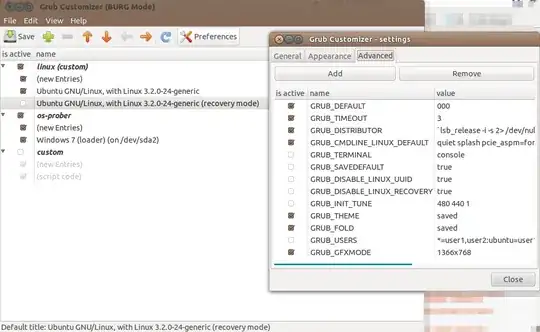I executed the shell script given in How do I delete kernels from a server?. It deleted old kernels but not their associated kernel entries in the Grub 2 menu. For example, the shell script did not remove the Grub 2 entry »Ubuntu, mit Linux 3.2.0-24-generic (Wiederherstellungsmodus) (on /dev/sda8)« and »Ubuntu, mit Linux 3.2.0-14-server«.
Asked
Active
Viewed 6,050 times
2 Answers
3
The best tool that I've found for Grub2 (and Burg) management is Grub Customizer.
sudo add-apt-repository ppa:danielrichter2007/grub-customizer
sudo apt-get update
sudo apt-get install grub-customizer
As shown in the image below, you can specify the order of kernels, the default kernel to run, and even manually add grub parameters. (I happen to be using burg, but burg is just a graphical wrapper for grub, so the config is the same).

- For more information, see this review of Grub Customizer on webupd8.org.
Gruzzles
- 855
1
Grub2 is a step forward in a lot of ways, and most of the annoying menu.lst issues from the past are gone. Still, if you’re not vigilant with removing old versions of the kernel, the boot list can still end up being longer than it needs to be.
This site (from which that's quoted) provides a complete tutorial on how to do this.
Eliah Kagan
- 119,640
Mitch
- 109,787